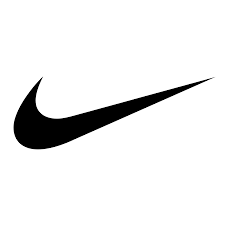A DIFFERENT PERSPECTIVE: An inside look of how I kept fit while being injured
- Annie Bothma

- Mar 17, 2019
- 14 min read
When I was flat on my back, I looked at life from a different angle and decided I wanted to change it. I chose to use the month I was off to empower myself and come back both physically and mentally stronger. Learn more about what I did to keep myself in shape these two months I was out with a back injury. During the period I was out I was unable to run, however, this didn't stop me from working on my dreams.

There were times where I was completely unable to do any training, or times when I was waiting on doctors to let me know what is the next step. It was very uncertain and frustrating at stages; and I was even booked into hospital to get an operation, but walked out two days after a multitude of tests, without getting an operation.
I was at a good fitness level before I had to take time off training and running so with the right type of rehab and cross-training I was able to maintain most of my base-fitness during my off-period. The most important thing, however, was to keep my mind active - not to lose hope, to stay positive and to still keep on dreaming, regardless of how bad the situation looked.
The 5 major components that kept me fit while being injured:
1. REHAB...and more REHAB
At the beginning of my rehab process I was very limited to which strength or conditioning exercises I could do. Although strength training and conditioning is something I already did as part of my training before my off-period, I just did a bit more of it and a bit different than before. (Read what motivated me daily to do my rehab in my post: The Medal on the Wall). I could only perform rehab/exercises with a straight back and neutral back. Thus, no bending movements such as flexion or extension, no compound movements such as squatting, or any bounding movements such as jumping. However, you will be surprised to learn how many exercises you can do while you are flat on your back. Here are the exercises that formed the bulk of my rehab.
NEUTRAL CORE EXERCISES:
Your core is so important when you run. A strong core will help you maintain a good posture, improve your balance, and reduce the strain on your lower back. These were my essential core exercises where my back is straight or supported on a mat. Dead bugs and bird dogs are especially good for those struggling with lower-back pain since they open up the lower back and strengthen the back and core.
dead-bugs
bird dogs
planks - normal, push-up planks, side planks
alternating toe-taps
knee stoppers
UPPER-BODY EXERCISES:
Often runners neglect their upper-body because there is a misperception that you just run with your legs. I use to be one of them until I discovered the great benefits of strengthening your upper-body simultaneously with your lower-body. After all, your upper-body needs to be able to keep up with your lower-body; your arms should be able to drive you forward, just like your legs. Especially when running uphill, I have found that strengthening my upper-body made a big difference in my power, form and speed. The more you twist with your upper-body when you run the more strain your lower-back is going to take. These are some of my essential upper-body exercises.
bench press, lying flat on the back.
push-ups - traditional decline, incline and tricep
tricep extensions, laying flat on the back
activation pulls, laying flat on the back
chest-flys, laying flat on the back.
bicep-curls sitting on a stability ball
GLUTES:
The biggest muscle in your body and your drive force when you run. If your glutes aren't strong enough you are going to compensate by using your hamstrings and quads instead. Often I see runners with knee problems or lower-limb injuries and as soon as we get their glutes strong enough their pain goes away and they are able to run with better form. Some essential glute exercises I do includes;
clam-shells with added resistance band
straight leg donkey kicks with added resistance band
laying side-leg extensions with added resistance band
glute-circuit with added ankle weights
glute-bridges with added resistance band
To learn more about strength training, conditioning and rehab please visit my website: https://www.firedfitness.net/. I do offer online strength and running programs that will give you access to the full exercise encyclopedia with videos, pictures and descriptions of all my strengthening exercises, rehab, running drills, stretches and more. Sign-up here.

2. AQUA JOGGING
Those that know me well, know I hate being in the water. I am not a swimmer, neither do I enjoy getting undressed and getting in a pool...BUT I know it's one of the best recovery and rehab methods to keep fit without adding external impact on your joints. So, I got out of my comfort zone and got into the pool! Personally, I don't like swimming for cross training since I would rather mimic a running movement or perform a movement closer to running, whenever possible. I chose aqua jogging as my form of cross training when injured and even currently I am still covering quite a bit of my mileage in the pool. However, you may have heard some people say it's easy or doesn't get your heart rate up high enough - I disagree. If you do it correctly, for a sufficient amount of time and incorporate Fartlek workouts you can definitely get your heart rate up! I also don't use a flotation-belt to keep me up, I wear aqua-jogger shoes (foam shoes, which helps you stay in balance). They won't help you stay above water or float, the moment you stop running - you will sink!
3. WALKING
I wouldn't really consider the walking I did an exercise that kept me fit, rather I see it as something that helped me stay mentally positive, think and clear my mind. It helped me to see things in a different perspective and realize that I can use this time to create something productive and help others. Read more about how I decided to expand my Fired Fitness Personal Training business to Online Training and Coaching in my previous blog post.
Being in nature is one of the reasons why I love to run and when I am injured and stuck indoors cross-training, I often feel depressed and sad without the sun on my skin, hearing the crashing waves and feeling the wind in my hair. It is part of my sanity! I love waking up early and seeing the sun rise, and getting my run in before the rest of the world wakes up! Living in beautiful Cape Town, South Africa, it's hard not to want to be outside with the surrounding mountain tops and blue oceans next to you! My pup, Gracie, didn't complain about the frequent walks this past month either!
4. FUEL
When athletes are down with an injury or sick in bed they often have the misperception that they don't need to eat much, since they are not running or playing a sport. The opposite is true, because certain foods and supplements may help reduce the amount of time your body needs to recover from an injury or infection. Your metabolism actually increases when you are injured or sick, with 15-50%, based on the severity of the trauma. For example, a sports injury or small surgery may cause an increase of 15-20%, while a major surgery or burn wounds may lead to an increase of up to 50%. Although your energy intake or appetite may not be quite a high as when you are exercising great volumes, not eating enough or the correct nutrients may lead to loss of lean muscle mass, poor healing and slow process. Here are some of the staple foods I eat and the reasons why they helped me recover faster.
PROTEIN-RICH FOODS

Protein is an important building block for many tissues in your body, including muscle. Depending on the severity of the injury or what you are able to do during your off-period, injuries may lead to a decline in strength and muscle mass. Getting enough protein can help reduce the loss and may help to prevent inflammation. Eating a protein-rich diet can also help you once you are able to start training since it will help preserve and build lean muscle mass.
MY STAPLES: Chicken, eggs, tuna, salmon/trout, ostrich, steak, whey isolate.
HEALTHY FATS

Don't be afraid of fat! Fat is a distance runner or endurance athletes friend. Not only does fat play important roles in keeping the body healthy, such as protecting our organs; absorbing fat-soluble vitamins such as Vitamin A, D, E and K; manufacturing and balancing of hormones; and formation of cell membranes in the nervous system, but it is also one of the best sources of energy since one gram of fat provides more than twice the amount of energy compared to protein and carbohydrates.
Two essential fats our body is not able to make is linoleic acid (an omega-6 fatty acid) and linolenic acid (an omega-3 fatty acid). A diet rich in omega-6 rich vegetable oils, and saturated fat will be pro-inflammatory while a diet high in monounsaturated fats and omega-3 fats will have anti-inflammatory effects. The ration of omega-6 to omega-3 in the body is important for control of overall inflammation in the body; a ratio of 3:1 or 1:1 is advised for a healthy inflammatory profile. I would advise to rather increase your intake of omega-rich foods than just taking a supplement. Not only does the food contain other nutrients such as protein, vitamins and minerals, but high intakes of omega-3 fats from supplements may reduce your body's ability to regain muscle mass once you return to training. Too high dosage of an anti-inflammatory agent may reduce acute healing, slowing down the body's natural response to healing. Thus, it may be best to increase your omega-3 intake from foods rather than supplements. However, if you cannot meet your needs through food alone, especially during times of injury when inflammation levels are higher you could take additional omegas in supplement form. I would recommend BiogenSA's Omega-supplement.
MY STAPLES: Avocado, Salmon/trout, tuna, almond and cashew butter, seeds, tahini, eggs, olive oil, coconut oil, coconut milk.
BONE-BUILDING FOODS

Calcium is an important component of bones and teeth. It's also involved in muscle contractions and nerve signaling. It's important to always get enough calcium regardless if you are recovering from an injury or not. Vitamin D is just as important since it helps your body absorb the calcium and plays a key role in recovering from any bone injuries. Only a few foods, such as salmon, mackerel, sardines, egg yolk and Vitamin D-fortified foods naturally contain vitamin D, but your body has the ability to make vitamin D from exposure to the sun.
MY STAPLES: calcium-rich foods I like to eat daily include: goats yoghurt and cheese, broccoli, spinach and other green leafy vegetables, almond butter and vitamin D-rich foods I like to eat often, includes salmon and eggs.
VEGETABLES & FRUITS

Eat the rainbow! Include a variety of vegetables and fruits in your diet. I like to spread it throughout the day, aiming to add some at every meal I eat. I eat both raw and cooked vegetables, but I avoid too much fibre-rich raw veggies before races or the night before a hard workout. Try to experiment and see which vegetables don't cause you gas, bloating or other stomach issues during training.
MY STAPLES: Sweet potato, beetroot, butternut squash, cherry tomatoes, cucumber, spinach, broccoli, green beans, red and yellow bell peppers, baby carrots, cauliflower
KEY VITAMINS
VITAMIN C:
This powerful anti-oxidant enhances neutrophil and lymphocyte activity during stage one of acute injury. It also plays an important role in collagen synthesis as it assists in the formation of bonds between strands of collagen fibre. If you don't eat enough vitamin C-rich food you may develop a deficiency and impair the formation of the collagen fibre, causing these fibrous tissues to be weak with poor adhesion. Since Vitamin C is a powerful anti-oxidant and immune system regulator it becomes important for injury repair.
MY STAPLES: berries, dark leafy greens, broccoli, tomatoes, mango and red and yellow bell peppers, lemons.
VITAMIN A:
This anti-oxidant acts to enhance and support early inflammation during injury, reverse post-injury immune suppression, and assist in college formation via collagenase modulation. Studies suggest collagen cross-linkage is stronger with vitamin A supplementation/intake and repair is quicker. Vitamin A has shown to improve immune function and promote wound/scar tissue healing.
MY STAPLES: Sweet potato, baby carrots, leafy greens, mangoes, eggs, spinach, tomatoes, squash, red and yellow peppers.
KEY MINERALS
MAGNESIUM:
This mineral assists with cell migration and wound healing. It also promotes bone strength and firmness.
MY STAPLES: Bananas, nut butter, salmon, seeds, avocado, leafy green vegetables.
ZINC:
Zinc is a component of over 300 enzymes in the body and plays an important role in DNA synthesis, cell division, and protein synthesis. These are all necessary for tissue regeneration and repair. A zinc deficiency has been linked with poor wound healing, tissue repair and growth.
MY STAPLES: Chicken, Goat Yoghurt, seeds, cashew and almond butter.
COPPER:
This mineral assists in the formation of new red blood cells and acts in concert with Vitamin C to form elastin and to strengthen connective tissue.
MY STAPLES: dark chocolate, cocoa nibs, nut butter (cashew and almond are my favourites), sunflower seeds.
SUPPLEMENTS
I don't take a lot of supplements since I believe in getting my nutrients from my diet instead. However, two supplements that I currently use every day that I would like to point out is:

BiogenSA: L-glutamine is great for recovery and supplementing amino acids have been shown to exert powerful effects on injury healing. When the body is under stress, arginine and glutamine become conditionally essential amino acids, and these as well as ornithine speed up the healing process in the body. My doctor recommended it for my Celiac Disease and IBS, since it helps repair the damaged and inflamed gut lining.
Wild Collagen Whey Protein

Collagen is the most abundant protein in your body and has several important functions such as providing your skin with structure and strengthening your bones. It forms a vital part of your connective tissues, that makes several of your body parts, including tendons, ligaments, skin and muscles. Formulated especially for women, using our premium quality Grass-fed whey protein isolate and concentrate blend; Boosted with digestive enzymes to assist absorption and reduce bloating. Flavoured naturally and sweetened using natural Stevia leaf extract. Enriched with Vitamins, Minerals and supercharged with Peptan™ Hydrolyzed Collagen is definitely ideal for recovery. I drink one or two servings daily, usually after exercises.
OVERALL:
I always strive to eat a balanced diet filled with nutrients, vitamins, and minerals.
I try to eat a variety of foods and be creative when I make myself a meal.
I include plenty of colours and aim to get plenty of nutrients in with every meal.
I eat frequently (typically every 2-3 hours), to keep my energy levels up and allow me to perform to the best of my ability.
The key is balance and moderation, I don't deny myself a treat if I crave it because it is my body telling me what it needs.
I don't make food my reward after training, rather I see it as something to fuel my fire - allowing me to do what I love!
* I received my qualification as a Fitness Nutritionist, as part of Master Personal Trainer qualifications.
5. MOST IMPORTANTLY: MENTAL TRAINING
"Your mind is your strongest muscle, train it well." - unknown. If you love to run or participate in sport, you know being injured is one of the toughest times to go through. Often we forget we are more than just runners or athletes and who we are in our sport does not define us as a person, rather I see it as a way of expressing yourself and becoming part of something bigger. As a runner I feel connected to a bigger community of other runners, that share my love for the sport and without being able to race over weekends and sitting on the sidelines watching others run, isn't always fun. Read my post on how incomplete my weekends felt without a Long Run. Here are some tips to stay motivated and keep your head strong while being injured:
MOTIVATIONAL VIDEOS
I know this may sound a bit stupid, and some of them are really dramatic. And yes, I know if you are injured right now the last thing you want to hear is that: "this will only make you stronger" However, I found that listening to some good motivational videos definitely helped to brighten my mood and made me feel more positive. Be selective and choose the ones you find motivates and adds value to your day.
RUNNING THROUGH HELL
"If you wake up tomorrow morning having given up it will be far more painful than anything you could ever have done. Remember pain and suffering is temporary, but quitting is forever."
MUSIC
This is definitely something that always helps me to keep going. Regardless if I am injured or not, I always turn to music to get me in the zone - psyched and focused. Those that know me well, know I don't like pop music I prefer rap, mental and rock. Often the words have deeper meaning and sometimes it feels like the artist is talking to me or wrote that song just for me. My go-to before workouts is Eminem (check out my playlist on Apple Music), and metal-core (check out my brother's playlist) for when I am doing strength workouts or when I am just listening to music at home. Find something that you enjoy, makes you feel motivated, and helps you focus before hard training or racing.
VISUALIZATION

Before you can achieve it you have to be able to see and believe it. Before I went to World Champs in China in 2015, I had a poster of China up against my wall. I was determined to go and look at that picture the months leading up to the trials made me believe I could do it and mentally prepared me for the ASA champs where I ended up coming second in the Open Senior Female race, securing my spot in the South-African team that went to the World Championships. Visualization can be a very helpful and effective tool when you are injured. Don't forget about the upcoming races on your calendar for the year; select those that are still within reach. I look realistically at my races and then choose the ones that are still far enough so you can safely make a comeback without pushing too fast too soon. Make adjustments in your planning to prevent your injury from relapsing - like run less adulating courses or schedule your races further apart to allow more recovery time. Close your eyes and see yourself crossing the line, see a good time on the clock/your watch and you never know, you might even get a new PB!
WRITE IT DOWN
Honestly, I can say writing is something that has always helped me clear, order and express my thoughts. It is one of the reasons why I started blogging, since it helps me share my thoughts and something I hope can maybe help others that are experiencing similar struggles as me. I hope to relate to others and share in their downs that, unfortunately, comes with the joys of running.
DON'T LOSE SIGHT OF YOUR GOALS
In my post, Changing the Plan, Not The Goal, I highlighted how hard it was for me to make a mental shift that I am not going to be able to run the marathon I was training for this year and that I would have to heal and get stronger before I can start chasing that dream again. I am not losing sight of it, I am simply allowing myself more time to achieve it! My goals are still up in my room where I can see them every day. Sometimes life forces you to change something and challenges you to go in a different direction. Although it can be uncomfortable at times, in the end, the challenge usually creates change for the better. I am putting up new goals and pushing for a stronger, faster and better version of me.
SUPPORT STRUCTURE
Regardless how strong you are mentally, we all need help from others. I don't know how I would have made it through these past two months if it wasn't for my family, friends, boyfriend and coach. Their love, care, support and understanding is what carried me through during times when everything felt completely overwhelming to me.
I am very thankful for my sponsors: Nedbank Running Club, Nike South Africa, and Biogen South Africa, who helped me get back on the road again.

Once something is taken away you simply cannot take it for granted anymore. I didn’t take running for granted, every run was a blessing to me, but after this month even small things I did sometimes take for granted like being able to drive my own car or bending down to tie my laces or pick something up are blessings to me now. It was really tough some days to get up while being unable to work, see the people at the gym I care for so much, participate in races or be surrounded by the running community, to do a long run over a weekend, not being able to go for a run... Don’t take it for granted. Just do it, because one day it may not be there anymore.
I truly hoped this post helped you if you ever struggled with an injury or are currently injured. If you like what you read, please subscribe to my feed to never miss a post.
Just do it, Just Run
- Annie
REFERENCES:
Berardi, J, PhD., and Andrews, R, MS/MA, RD., Nutrition: The Complete Guide, Official Course Text for ISSA's Specialist in Nutrition Program, first edition, Carpinteria, CA, International Sports Sciences Association: 2013


























































































Thank you for this awesome post